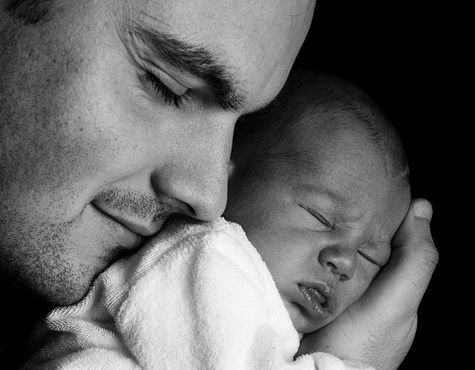Neonatal intensive care units are marvels of medical technology that have saved the lives of countless infants born too early or weighing too little. Nevertheless, life in a NICU can be very stressful to a newborn. Twenty-four-hour exposure to light, loud noises from various alarms and medical machinery, the irritating smell of disinfectants and adhesives can rattle the newborn’s still-developing nervous system, triggering multiple internal alarms. As if that weren’t bad enough, studies have found that hospitalized neonates undergo an average of 10 to 14 painful-yet-necessary medical procedures a day — usually without a reassuring touch from Mom or Dad to soothe them.
Researchers now recognize that the combination of repeated negative experiences unbuffered by positive ones so early in life can permanently and negatively affect an infant’s brain. Prematurity is associated with higher risk of developing certain neurological disorders, including learning disabilities, anxiety and attention disorders. In any event, nurse scientists in particular have researched a variety of ways to try to reduce the stress experienced by hospitalized newborns.
Simply stroking a premature baby’s skin with bare fingers or placing the child on the mother’s or father’s chest for prolonged periods, in what is called the kangaroo method, seems to have both short-term and long-term benefits for babies and their parents, according to a recent review by Britt Fisk Pados, a researcher and board-certified neonatal nurse practitioner at Boston College. The practice makes intuitive sense. Indeed in the late 1970s, doctors and nurses in Bogota, Colombia — facing a shortage of incubators — pioneered kangaroo care for certain premature babies by placing infants in an upright position for 24 hours a day on their mothers’ chests. Mortality rates for underweight babies began to drop and the practice soon spread throughout the developing world.
Proving that direct skin contact reduces stress in premature babies in the developed world, however, turned out to be rather complicated. For one thing, how do you measure stress in a newborn? You might think crying is an obvious indicator, but interpreting cries can be a very subjective measure and thus not scientifically useful. Also, infants cry because they are hungry, lonely, uncomfortable, afraid or for no apparent reason.
When newborns are stressed, their heart rates increase and they tend to breathe more quickly. These physiological responses can occur for other reasons, but they are easily measured, so researchers studying stress in newborns often look at heart rate and oxygen levels in the blood as a guide. In addition, two hormones are sampled in these studies — cortisol, which is one of the hormones the body uses to respond to stress, and oxytocin, which is known as the “love hormone” because it is produced during cuddling, among other things.
“Cortisol and oxytocin levels are probably our most accurate measures of stress in neonates,” Pados says. She and one of her students, Francis Hess, undertook a rigorous analysis of all the studies of skin-to-skin care conducted since 2000. In total, they analyzed 19 studies and found mixed results, overall, when researchers measured heart rate or oxygen levels. Some studies showed a benefit and others showed no difference between newborns in the NICU who had received skin-to-skin contact compared with those who had not.
A clearer difference emerged from the few studies that looked at either cortisol or oxytocin levels as measured in saliva. Researchers found statistically significant reductions in stress levels from skin-to-skin contact that lasted at least an hour—whether with a child’s mother or father. Pados’ and Hess’ study appeared online in March, ahead of print in Advances in Neonatal Care.
Other studies have found positive effects from kangaroo care in reducing the stress from necessary-but-painful procedures. A few investigations have even suggested that prolonged skin-to-skin contact can actually lower risk of infection in premature babies as the parents transfer some of the normal healthy bacteria from their skin to the child’s, providing something of a microbial buffer against the harmful pathogens that can be found in hospitals.
Needless to say, providing kangaroo care in the NICU is not necessarily easy. “It may take two nurses to move a baby on a ventilator over to the parent.” Pados says. Parents’ own fear that they could accidentally hurt their child also needs to be addressed, and they may need guidance, education and training.
Still unknown are issues of timing and duration. One study by Jenn Gonya and Leif D. Nelin at Nationwide Children’s Hospital in Columbus, Ohio, found that critically ill infants experienced kangaroo care from their parents only twice a week, on average, in the NICU. That probably does not provide the greatest benefit but no one really knows how much contact is ideal, Pados says. Is something less than 24 hours a day still helpful? Although skin-to-skin care appears safe for many premature babies, no one yet knows whether it will be helpful to the most premature or tiniest infants. There is still a lot to learn but, the current study concludes, the practice seems safe and Pados and other researchers believe it should be incorporated more often into neonatal treatment.
Christine Gorman is a freelance health and medical writer based in New York, N.Y.
